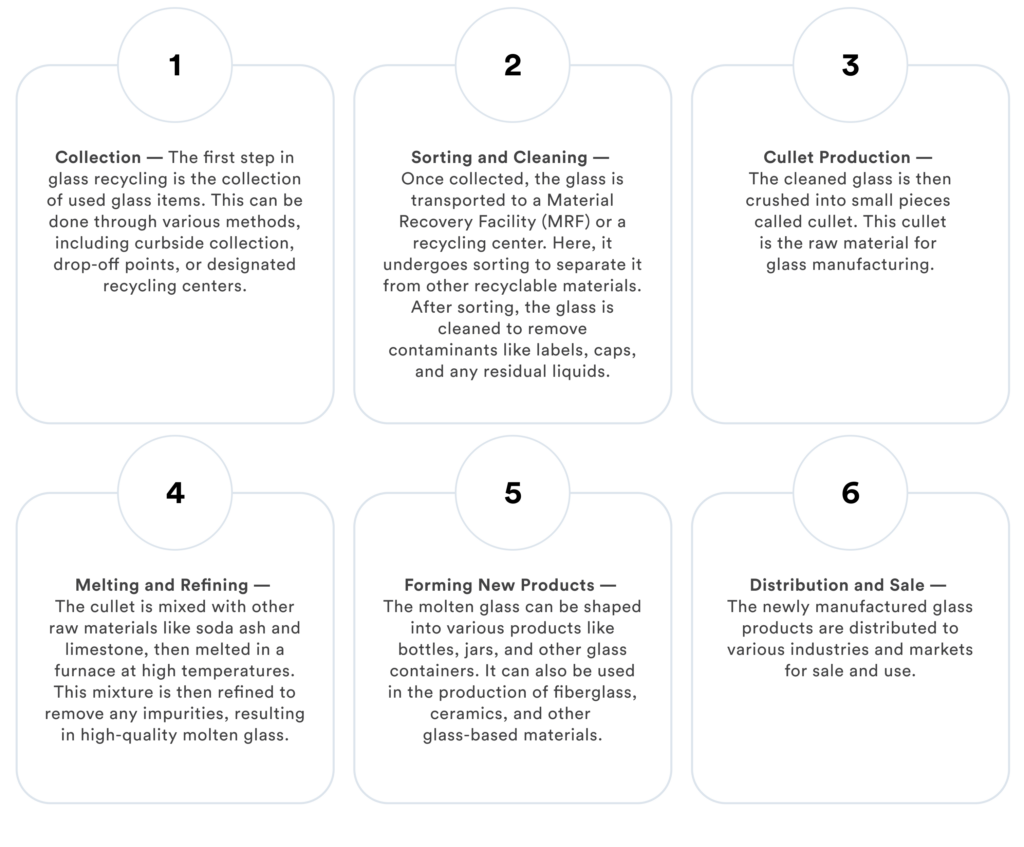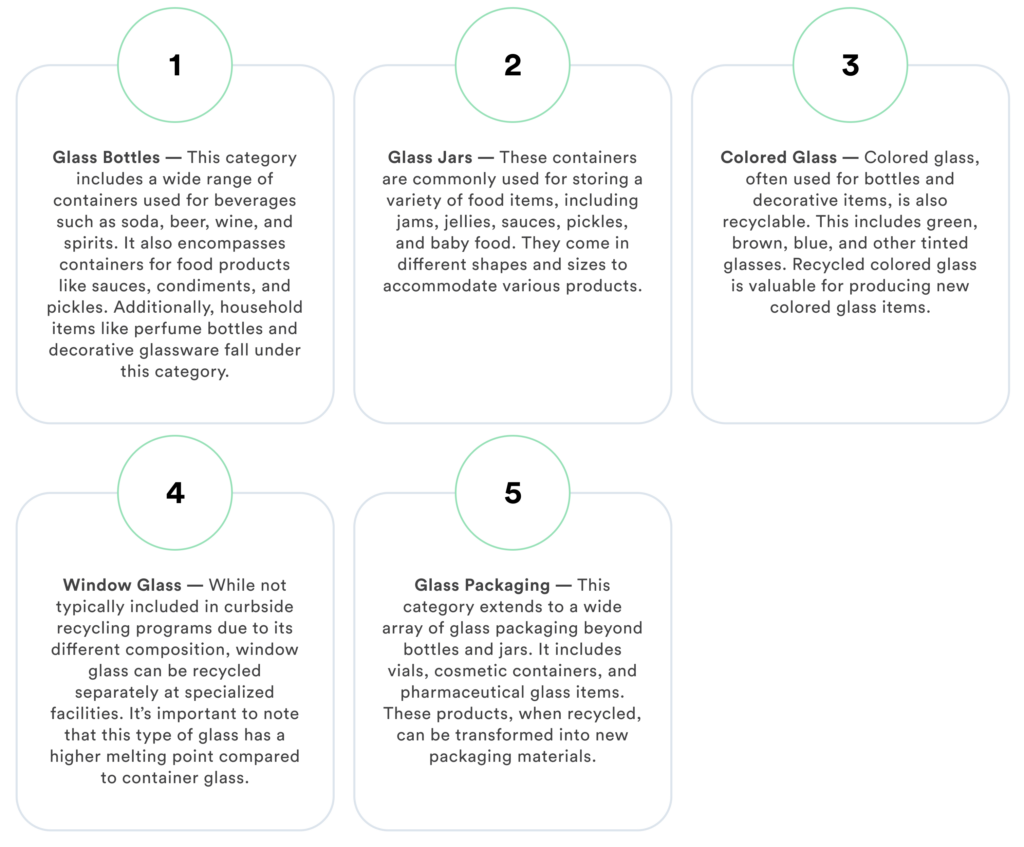Glass, in one form or another, has been around for a long time. In fact, the earliest known examples of ornate glassware date back at least 3,600 years to ancient Mesopotamia, with other suggestions indicating it may have originated even earlier in Egypt. Either way, by the time the Romans came along, glassware was a featured everywhere from domestic activities through industrial processes to ceremonial settings.
Of course, while we still prize ornate glass for its elegance and sophistication, today it also plays a huge role in the way we store, ship, and consume goods. Everything from water to soda, food to oil, cosmetics, pharmaceuticals, and even pet care products find a home in modern glassware, and the unique material properties of glass will likely mean it stays around a while longer.
However, while glass recycling is among the most efficient and ubiquitous ways to keep materials in the loop, there are concerns that the future of this process is in jeopardy. This article explains the reasons why, in the US, glass recycling is in decline and how those rates can be improved. Read on to learn more.
How Is Glass Recycled?
Glass recycling has been the shining light of sustainable waste management since its invention, and even the Romans recognized its potential for reuse. Today, the process has been refined to remove impurities and produce new glass products of the same quality as the original—making glass a truly circular material that is infinitely recyclable.
Modern glass recycling involves the collection, processing, and transformation of used glass items into new products, conserving raw materials, reducing energy consumption, and lowering greenhouse gas emissions associated with new products. In most cases, glass recycling will follow these stages:

What Types of Glass Are Recyclable?
Most everyday products made of glass are recyclable, this includes:

What Types of Glass Are Not Recyclable?
Unfortunately, not all glass is recyclable, however, and glass-based items such as the following should not be added to recycling bins:

Current State of Glass Recycling
With such a long history of glass recycling in the west, it may be difficult to believe that the industry is facing a crisis, and in many cases glass recycling is in decline in the US. There are a number of reasons for this, and while some European countries claim to recycle more than 90% of their glass waste, as of 2019, the US recycling rate was as low as 33%. Additionally, while glass recycling rates in the UK have tripled in the past 25 years, the US rates have barely moved.
Perhaps the most significant of reasons behind these poor recycling rates is a governmental approach that prioritizes single-stream recycling. Not only does single-stream require consumers to mix all types of materials together in one box i.e. paper, card, glass, and aluminum, but it also encourages aspirational recycling, where consumers add items to bins that will only ever be destined for landfill.
With single-stream recycling, all items must be separated at a sorting facility and subsequently sent to the correct recycling facility capable of processing those specific materials. The problem here is twofold, firstly, glass can easily break and become both contaminating to other materials and contaminated by other materials. This makes it more difficult to separate and subsequently recycle.
According to the Glass Packaging Institute, these elements taken together mean that those states with container deposit legislation boast an average recycling rate of 63%, while those that rely purely on curbside collection only reach around 24%.
Challenges to Improving Glass Recycling Processes
The challenges faced in the US, while not easily solved, can be addressed by creating more comprehensive frameworks and infrastructure to support recycling of all materials. Working towards a circular economy is becoming a necessity for countries around the world, and glass recycling, once again, can be the standard bearer for these systems.
However, to achieve this, the following issues will need to improved:
Contamination
As we’ve mentioned, many recycling programs in the US operate on a single-stream system, where all recyclables are collected together. This can lead to higher contamination rates, as different materials, including non-recyclable items like ceramics or plastics, are mixed together. In turn, some consumers may not be well-informed about what can and cannot be recycled which leads to inadvertent contamination when non-recyclable items are placed in recycling bins.
This means US states must try to switch to container deposit systems or provide dedicated glass bins on city streets in the same way that much of Europe already does.
Energy Costs
The process of smelting and refining glass requires high temperatures, which demands a significant amount of energy. In the US, where energy costs can be substantial, this poses a financial challenge to recycling facilities. In addition, the glass’s infinitely recyclable nature has come to work against it to an extent, since the sheer amount of cullet in circulation has meant that it is less profitable to recycle than it was previously.
Developing more energy-efficient furnace technologies for glass recycling could help mitigate some of the energy consumption issues, and exploring and adopting renewable energy sources, such as solar or wind power, for the melting process could also help reduce the environmental impact of glass recycling.
Transportation and Distribution
In the US, glass recycling facilities may be located far from collection points, leading to increased emissions from transportation. This is especially true in regions with lower population density. Additionally, depending on the location of glass recycling facilities, there may be logistical challenges in transporting recycled glass to manufacturers. Proximity to end-users is crucial for efficient recycling processes.
Implementing optimized logistics and supply chain practices can help reduce emissions and energy consumption associated with the transportation of recycled glass. With regional solutions, such as establishing local processing facilities or improving transportation networks also addressing transportation-related challenges.
Markets for Cullet
The market for cullet, or crushed recycled glass, can face fluctuations due to various economic factors. When the demand for new glass products decreases, it can lead to a decrease in demand for cullet. This can affect the economic viability of glass recycling operations.
Subsequently, as sustainability practices evolve, there must be interest in exploring and adopting alternative materials that are renewable and easily recyclable. This transition poses a challenge for the traditional glass recycling industry, as it necessitates shifts in infrastructure and processes to accommodate new materials.
Conclusion
Despite fluctuating markets, inadequate infrastructure, and inefficient collection practices, glass recycling remains a hugely important part of our push towards a more sustainable future. While the challenges faced in the current climate are not insurmountable, more needs to be done in order to create efficient recycling of glass products and, where the demand for glass containers slows, alternatives uses for glass in other materials and processes should be explored.
For more information on glass recycling, sustainability programs, and guidance on how the circular economy can help your businesses, contact RTS today and explore our resource section.

